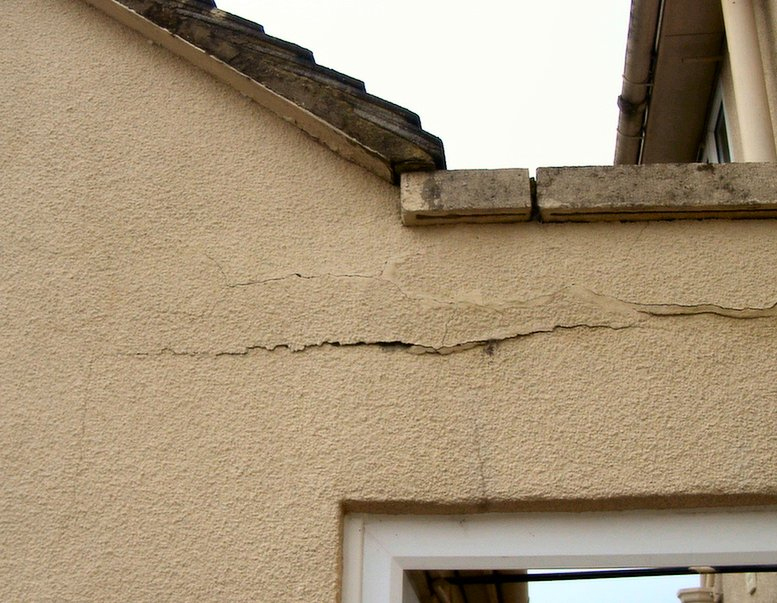Building failure
Failure occurs when the desired outcomes are not achieved. It is the opposite of success.
Culvert, screen and outfall manual, (CIRIA C786) published by CIRIA in 2019, defines failure as: ‘Inability to achieve a defined performance threshold.’ And catastrophic failure as: ‘…the situation where the consequences are immediate and severe.’
Construction projects are costly, complex and often involve a large number of different stakeholders, suppliers and technologies, meaning that the potential for failure is considerable. Failures can occur at a project level, typically resulting in cost or time overruns, or disputes, or they can occur at a construction level, generally caused by deficiencies in design, products, specifications or workmanship.
Some of the most common reasons for project failure include:
- Cost overruns due to inaccurate estimates and budgets, changing market conditions, and so on.
- Poor briefing.
- Scope creep, where the extent of the work expands beyond the original agreement.
- Delays due to incomplete or unclear information.
- Break down in the relationship between the parties to the project.
- Site conditions.
- Design errors, lack of co-ordination or clashes.
- Insolvency of contractors or suppliers.
- Variations.
- Financing.
- Lack of qualified and available workers, specialists, materials, plant, and so on.
Common construction failures include:
- Cracking and building movement.
- Dry rot, wet rot, woodworm and mould.
- Damp.
- Condensation.
- Structural failure.
- Metal fatigue.
- Window and door failure.
- Defects in brickwork (see also: Efflorescence / Spalling).
- Defects in stonework.
- Flooring defects.
- Roofing defects (See also: Flat roof defects).
- Sick building syndrome.
- Wall tie failure.
A structure will fail when a material or system is put under strain at the limit of its strength, resulting in cracks or deformation. Once it surpasses its ability to endure the loads, it will fail. When designing structures, the ultimate failure strength of a material or element must be taken into consideration, with a factor of safety integrated into the design analysis, enabling it to take certain stresses and strains without failing.
Building defects can be 'patent' or 'latent'. Patent defects are those which can be discovered by reasonable inspection. Latent defects are those which cannot be discovered by reasonable inspection, for example problems with foundations which may not become apparent for several years after completion when settlement causes cracking in the building. When a latent defect becomes apparent, it becomes patent rather than latent.
[edit] Related articles on Designing Buildings
- Cascade failure.
- Consolidation.
- Cracking and building movement.
- Defects.
- Defects in brickwork.
- Defects in dot and dab.
- Defects in stonework.
- Deterioration.
- Failure modes and effect analysis (FMEA).
- Failure of cast iron beams.
- Failure to mention asbestos.
- Flat roof defects.
- Flooring defects.
- Ground heave.
- Housing defects.
- In Plain Sight: reducing the risk of infrastructure failure.
- Latent defects.
- Mechanisms of structural failure.
- Patent defects.
- Progressive failure.
- Roofing defects.
- Smarter systems predicting failure.
- Structural failures.
- Wall tie failure.
Featured articles and news
British Architectural Sculpture 1851-1951
A rich heritage of decorative and figurative sculpture. Book review.
A programme to tackle the lack of diversity.
Independent Building Control review panel
Five members of the newly established, Grenfell Tower Inquiry recommended, panel appointed.
Welsh Recharging Electrical Skills Charter progresses
ECA progressing on the ‘asks’ of the Recharging Electrical Skills Charter at the Senedd in Wales.
A brief history from 1890s to 2020s.
CIOB and CORBON combine forces
To elevate professional standards in Nigeria’s construction industry.
Amendment to the GB Energy Bill welcomed by ECA
Move prevents nationally-owned energy company from investing in solar panels produced by modern slavery.
Gregor Harvie argues that AI is state-sanctioned theft of IP.
Heat pumps, vehicle chargers and heating appliances must be sold with smart functionality.
Experimental AI housing target help for councils
Experimental AI could help councils meet housing targets by digitising records.
New-style degrees set for reformed ARB accreditation
Following the ARB Tomorrow's Architects competency outcomes for Architects.
BSRIA Occupant Wellbeing survey BOW
Occupant satisfaction and wellbeing tool inc. physical environment, indoor facilities, functionality and accessibility.
Preserving, waterproofing and decorating buildings.




















